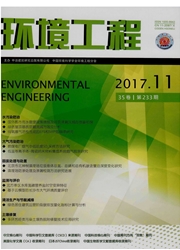

 中文摘要:
中文摘要:
以PN-ANAMMOX为代表的生物自养脱氮联合工艺突破了传统生物脱氮的基本理论,无需另外投加有机碳源,受到国内外研究学者的广泛关注。而PN-ANAMMOX新型联合工艺在中温环境下处理废水的能耗高于传统生物脱氮工艺。为此,综述了常温部分亚硝化工艺与常温ANAMMOX工艺的研究进展,分析其两种工艺的实现方法。对PNANAMMOX联合工艺在常温与中温下脱氮速率的差异进行分析。在常温下ANAMMOX过程是整体联合工艺的速率限制步骤,应重点控制。在20℃时联合工艺脱氮效率虽然略低于中温,但能够满足脱氮要求,节省了加热废水的能耗,相比中温更具经济价值。
 英文摘要:
英文摘要:
The biological autotrophic joint technology represented by PN-ANAMMOX without adding organic carbon broke through the basic theory of traditional biological nitrogen removal,which attracted widespread attention of research scholars in China and overseas. The energy consumption of the PN-ANAMMOX joint process for treating wastewater was higher than traditional biological nitrogen removal process at medium temperature conditions. So the paper summmarized the progress of partial nitrification process and ANAMMOX process at normal temperature and analyzed their implementation method,making analysis on the difference of nitrogen removal rate of PN-ANAMMOX joint process at normal temperature and medium temperature. ANAMMOX process was the rate limiting step of the joint process at normal temperature,which should be paid attention to in controlling. The nitrogen removal rate of joint process at 20 ℃ was slightly lower than medium temperature,which could meet the nitrogen removal requirements and saved energy for heating wastewater. It was more economical compared to the reaction in medium temperature.
 同期刊论文项目
同期刊论文项目
 同项目期刊论文
同项目期刊论文
 期刊信息
期刊信息
